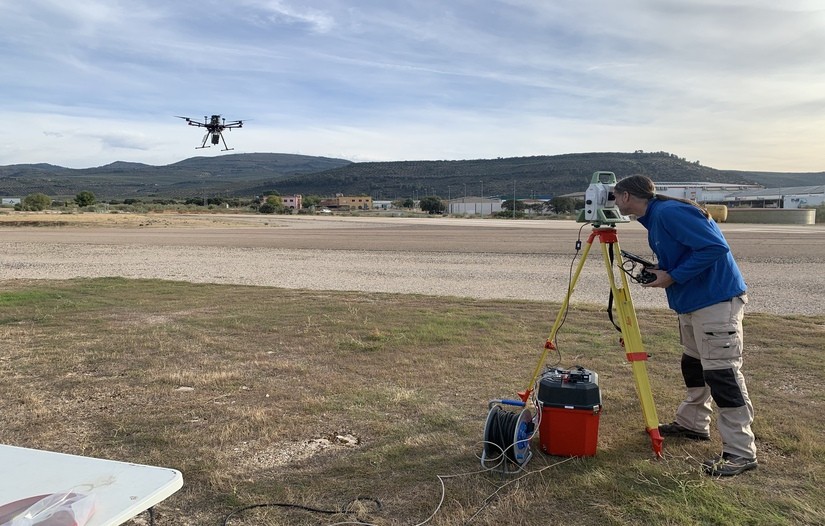Succesful flight tests performed for SONORA project

On November 8th and 9th, representatives from GMV were at the Tactical Center of the Air Traffic Laboratory for Advanced Unmanned Systems (ATLAS), which is located in Beas de Segura in the Spanish province of Jaén. The purpose of their visit was to perform a variety of flight tests with drones, as part of the SONORA project.
The primary aim of SONORA (Support to Standardisation Actions for EGNOS and Galileo in the U-Space) is to assist with development of the U‑Space and UAS industry, by contributing to incorporation of European Global Navigation Satellite System (EGNSS) services into its standards and regulations, while also fostering the implementation of EGNSS‑based solutions in the U‑Space.
GMV is participating as part of a consortium led by VVA Brussels and composed also by CATEC, MCI and RP Legal & Tax. The consortium will be responsible for executing this 30‑month project, which is funded by the European Union’s research, development, and innovation (RDI) program.
Two flight trial campaigns have been foreseen to achieve SONORA’s objectives. The first one, in ATLAS, had the purpose of collecting and analysing GNSS data from different equipment and technologies as a way to support the development and verification of standards, as well as evaluating new EGNSS services such as GAL HAS and OS-NMA, in a non-degraded environment. For this purpose, several real-life UAS missions, such as highway surveillance, vehicle pursuit, and intrusion detection, where planned and executed.
The second one will take place in the coastal city of Benidorm and is scheduled for autumn of 2023. It will include the performance of a similar study, but this time in a more challenging urban environment and including the use of GNSS receivers hybridized with other technologies such as IMUs. The main objective of this experimentation will be to gather relevant data on EGNSS services for the support of the development of Innovative Air Mobility applications, such as Urban Air Mobility.
The on-going result analysis has already led to some interesting conclusions. During the first day of the trial there was a solar storm that led to obtaining a degraded GPS single frequency performance. However, when in combination with EGNOS, even in single frequency the ionospheric error was corrected and position errors were reduced considerably, resulting in the best observed performance among all tested configurations.
Regarding the comparison between Galileo and GPS and the single and double frequency solutions (SF and DF, respectively), it has been observed that under similar geometry conditions in terms of satellite distribution and availability, the accuracy provided by Galileo is better than GPS’s. Also, Galileo’s accuracy improves significantly with DF compared to SF, reaching errors almost as low as those obtained with SBAS (EGNOS).
About the new services, it is worth mentioning that these UAV flights have been the first in UAS industry to test OS-NMA and HAS systems. OS-NMA has been proven to distinguish between trusted and unreliable sources, and while HAS is still under assessment, an accuracy of the order of half a dozen of centimeters is expected, exceeding EGNOS performance.